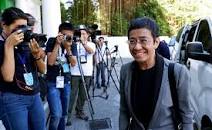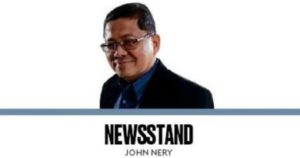COLUMNISTS: NEWSSTAND- Who’s afraid of Maria Ressa?
NEWSSTAND
On Monday, June 15, Judge Rainelda Estacio-Montesa of the Manila Regional Trial Court Branch 46 will issue her decision in the controversial cyberlibel case against journalist Maria Ressa, former Rappler researcher-writer Reynaldo Santos Jr., and Rappler itself. The decision will be watched closely in newsrooms across the country and around the world.


Will Estacio-Montesa uphold the storied tradition in Philippine jurisprudence that has long favored the triple right guaranteed in the Bill of Rights to “freedom of speech, of expression, or of the press”? Or will she find that Ressa, Santos, and Rappler have met the elements of libel, including the difficult criteria for malice, when the online news site published its story about the late former chief justice Renato Corona and his unseemly practice of using vehicles owned by “controversial businessmen,” on May 29, 2012?


The “liberal” tradition in court decisions on libel includes some of the most eloquent passages in official Philippine documents. In Bulletin Publishing Corp. vs Noel (1988), for example, we read Justice Feliciano’s marching orders to the free press: “A newspaper especially one national in reach and coverage, should be free to report on events and developments in which the public has a legitimate interest, wherever they may take place within the nation and as well in the outside world, with minimum fear of being hauled to court by one group or another (however defined in scope) on criminal or civil charges for libel, so long as the newspaper respects and keep within the standards of morality and civility prevailing within the general community.”


In the landmark case of Borjal vs. Court of Appeals (1999), Justice Bellosillo (having recovered from the purple prose of his opening passage) forcefully reminded the press about its responsibilities. But even this admonition could not blunt his restatement of the liberal tradition. “For we have always strongly maintained, as we do now, that freedom of expression is man’s birthright — constitutionally protected and guaranteed, and that it has become the singular role of the press to act as its ‘defensor fidei’ [the defender of the faith] in a democratic society such as ours. But it is also worth keeping in mind that the press is the servant, not the master, of the citizenry, and its freedom does not carry with it an unrestricted hunting license to prey on the ordinary citizen.”


Perhaps the most famous passage of all is from US vs. Bustos (1918), where Justice Malcolm spoke for all time: “The interest of society and the maintenance of good government demand a full discussion of public affairs. Complete liberty to comment on the conduct of public men is a scalpel in the case of free speech. The sharp incision of its probe relieves the abscesses of officialdom. Men in public life may suffer under a hostile and unjust accusation; the wound may be assuaged by the balm of a clear conscience.”


To find Rappler, Santos, and Ressa — now the fitting subject of acclaim around the world, for her persistence in calling her news organization and other journalists to #HoldTheLine in the face of systematic government harassment—all guilty of cyberlibel, Judge Estacio-Montesa must hurdle five obstacles:
1. She must find that the defendants can in fact be charged under the Cybercrime Prevention Act, which came into effect in September 2012, four months AFTER the article was published.
2. To do that, she must accept the government prosecutors’ inventive legal theory of “continuous publication” or “multiple publication.”
3. For her to accept that theory, she must tell the world that the correction on Feb. 19, 2014, of one word in the article — changing “evation” to “evasion” — meets the legal requirement of substantial modification.
4. To argue the view that changing one letter means that the entire article, published before cyberlibel was defined in law, is now deemed to have been republished (that is, met the requirement of “republication,” which gives rise to a “new cause of action for defamation”), she must go against the grain of a century’s worth of jurisprudence, which has always held that (to cite a passage from two libel cases the Inquirer has won), “fair reports … should not be subjected to microscopic examination to discover grounds of malice or falsity.”
5. To use that weaponized microscope, she must surmount the biggest hurdle of all: not seeing the bigger picture. The cyberlibel case was followed by a series of at least eight lawsuits (I’ve actually lost count), for alleged foreign ownership, alleged violation of the anti-dummy law, alleged tax evasion.


My hope is that Judge Estacio-Montesa follows the liberal tradition, and uses the law not to enshackle but, precisely, to liberate.
On Twitter: @jnery_newsstand, email: [email protected]


SIGN UP TO RECEIVE OUR EMAIL
.
The most important news of the day about the ASEAN Countries and the world in one email: [email protected]
6.11.2020










